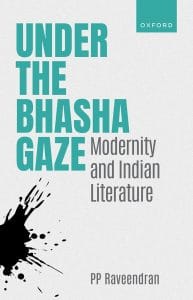A standard, Orientalist myth about the Indian popular imagination suggests that the literary mind in India is generally prone to the magical and the fabulous. Though this could perhaps be an allusion to the practices of non-linear narration and non-realistic representation often adopted by Indian—perhaps non-western—narratives of the premodern past, the myth seems to have acquired the status of received wisdom among scholars, especially western scholars, in the period of modernity.
Although most Indian bhasha readers today may not be persuaded to accept the idea of the probability or possibility of magical and fabulous happenings in everyday life, a good many would recognize fantasy to be an important aspect of an individual’s historical experience, mediated as it is through the kaleidoscopic lens of spectacle and visuality in contemporary public life. This might be one of the reasons why fantasy literature—going under such rubrics as surrealism, irrealism, fabulation, magical realism, and marvellous realism—emanating in particular from the Latin American continent has been widely influential in Indian bhashas.
Though it was as part of the literary modernist developments of the 1950s and later that most Indian bhashas started taking note of the new writing from South America, it was modernism’s political turn in the subsequent decades that led to massive efforts to translate the fiction of such writers as Gabriel Garcia Marquez, Carlos Fuentes, Jorge Luis Borges, Juan Rulfo, Mario Vargas Llosa, and Julio Cortazar into bhashas. Indian critics are fond of attributing a Latin American flavour to the bhasha writers. The Indian English writers, and the English writers of Indian origin that they like.
Also read: Is the novel dying in India? Publishers chasing more and more non-fiction
Among writers who are often described as being close in spirit to Latin American writing are Mahasweta Devi and Nabarun Bhattacharya in Bengali, Salman Rushdie, Amitav Ghosh, and Arundhati Roy in English, Uday Prakash, Pankaj Bisht, and Geetanjali Shree in Hindi, Girish Karnad and Prasanna in Kannada, Anand, V.P. Sivakumar, and Thomas Joseph in Malayalam, Bhalchandra Nemade in Marathi and Manoj Das in Odia. Malayali readers are particularly fond of Latin American fiction, a fact that has been playfully expressed in the statement made by a well-known Malayalam fictionist that Marquez is the most popular Malayalam writer of today.
Obviously, bhasha readers do not see the somewhat magical character of contemporary fiction as being out of tune with the demands of real history. This might force us to rethink the relation between history and fantasy in the context especially of narrative perspectives originating from the cultures of the global South. An exploration of the intermeshing of fantasy and the historical imagination in the cultural lives of India and Latin America could therefore provide a key to the intricacies of the ideological worlds that straddle the literary minds in these two cultures. One might do this through an analysis of select specimens of Malayalam fiction read in the ambience of the Latin American cultural impact and the general background of theoretical reflections on the interplay between fantasy and the historical imagination. Fantasy, whether Indian or Latin American, is a mode of non-realistic narration involving forms of fiction, marked in most cases by a strongly ahistorical temper.
Traversing a wide range and variety of literary genres including the romance, the fairy tale, and science fiction, fantasy is implicated in imagined worlds where magical or supernatural happenings are accepted as probable or possible. It is common knowledge that theories about fantasy and history for a long time partook of the assumptions of the age-old doctrine of mimesis that posited, with rare exceptions as in the case of Erich Auerbach’s classic study of the representation of reality in western literature, a somewhat naive relation between narration and meaning.
Narration or representation in this view is the simple act of meaning transfer from the realm of objective history to that of imagination. Fantasy, accordingly, is regarded as a representation of the eerie and the supernatural, which has the effect of bewildering the readers and confounding them as to the nature of reality. However, fantasy has also been one of the major elements of narrative fiction in Kerala and South America alike, even in the days when the perception that history ultimately is the fiction that we all live in real life was yet to capture the imagination of the writers.
This is what we are to gather from the pervasive presence of the fantastic in one of the early novels in Malayalam, which is also the first ‘historical novel’ in the language, C.V. Raman Pillai’s Marthanda Varma (1891). This is a taut, densely structured novel composed in a style and a language that is more closely packed than some of the forests and fortresses depicted in it. The novel begins with an account of Pachavankadu, the mysterious and mystifying heterotopia of a dark forest, the description of which becomes a prelude to the seemingly impossible events recounted in the later sections of the novel.
This is no less true of Latin American fiction, which at least from the time of Cuba’s Alejo Carpentier has been consciously cultivating the style of what has come to be known as magical realism. The story of a person who, after his death, returns to his mother’s womb perhaps can be narrated only in Carpentier’s magical realist style, which he deploys artfully in ‘Journey Back to the Source’ (1944). Interestingly, Carpentier too has, a little late in his life, authored a full-fledged historical novel, El siglo de las luces (Explosion in a Cathedral, 1962), chronicling the French revolution’s impact on the Caribbean islands, which, like C.V. Raman Pillai’s historical novels, raises questions about history that cannot be answered in simple, monological terms. Several of Carpentier’s early works like The Kingdom of the World (1950) and the Lost Steps (1953) mingle fiction and history in their formal construction and would, like Marthanda Varma before them, illustrate the dialogic potential of fiction and the presence in history of the magical and the marvellous.
 This excerpt from PP Raveendran’s ‘Under the Bhasha Gaze: Modernity and Indian Literature’ has been published with permission from Oxford University Press.
This excerpt from PP Raveendran’s ‘Under the Bhasha Gaze: Modernity and Indian Literature’ has been published with permission from Oxford University Press.






